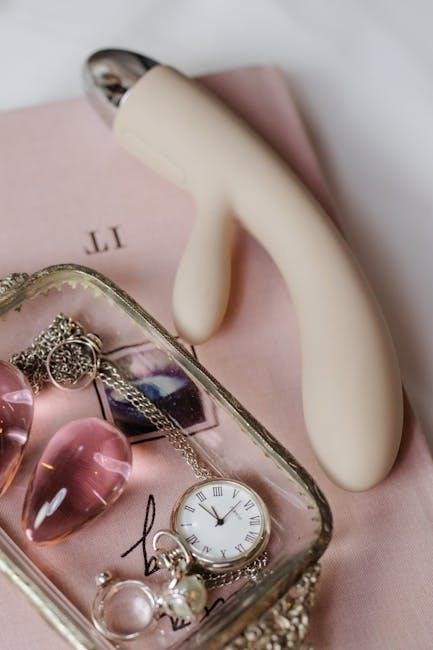5e guide to sex
Romance and sex in D&D 5e can deepen storytelling and character development when handled with care. Hearts and Arrows offers creative rules for flirting, dates, and emotional depth, ensuring fun and respect for all players.
1.1 The Role of Romance in D&D Campaigns
Romance in D&D campaigns enriches storytelling, deepens character development, and fosters emotional connections. It allows players to explore complex interpersonal dynamics, creating memorable moments and plot hooks. Whether PC-NPC or PC-PC relationships, romance can enhance party cohesion or introduce dramatic tension. By integrating romantic elements thoughtfully, DMs can craft narratives that resonate on a personal level, making the game more immersive and engaging. Romance also serves as a creative outlet, enabling players to express their characters’ vulnerabilities and desires, adding layers of realism and emotional depth to the adventure. Balancing romance with adventure ensures it complements, rather than overshadows, the main storyline.
1.2 How Sex and Relationships Can Enhance Storytelling
Sex and relationships in D&D can add depth to narratives, making characters more relatable and human. These elements can create emotional stakes, drive plot progression, and explore character motivations. Intimate moments, when handled tastefully, can reveal vulnerabilities, foster trust, or ignite conflicts. Relationships also provide opportunities for character growth, such as overcoming past traumas or learning to trust. By integrating these themes, storytellers can craft engaging, realistic, and memorable experiences. However, ensuring comfort and consent among all players is crucial to maintain a positive and enjoyable gaming environment. When done respectfully, these elements enrich the story and deepen player investment.
1.3 Setting Boundaries and Comfort Levels at the Table
Establishing clear boundaries is essential for incorporating romance and intimacy in D&D. Before introducing such themes, discuss comfort levels with your players to ensure everyone feels respected. Open communication helps prevent discomfort and ensures all participants are on the same page. Be mindful of individual preferences and cultural differences, as these can significantly influence how players perceive in-game relationships. Creating a safe space fosters trust and allows the group to explore these themes confidently. Remember, the goal is to enhance the story while maintaining a positive and inclusive environment for all players.

Mechanics for Romance and Flirting in D&D 5e
Romantic interactions can be enhanced using ability checks, homebrew rules, and charisma-based mechanics. Hearts and Arrows provides tools for flirting, crushes, and emotional depth, enriching your campaign.
2.1 Using Ability Checks for Flirting and Seduction
Ability checks can add structure and fun to romantic interactions. Charisma checks are ideal for flirting, while Dexterity or Strength might determine physical chemistry. Constitution can reflect endurance, ensuring consent and comfort are prioritized. Homebrew rules like phased encounters (foreplay, duration, execution) provide depth. Players can use these mechanics to navigate romantic scenarios creatively, enhancing storytelling without discomfort. The goal is to balance roleplay with mechanics, ensuring all players are engaged and respected. This approach keeps interactions lighthearted and fun, avoiding awkwardness while adding emotional depth to the game.
2.2 Homebrew Rules for Romantic Encounters
Homebrew rules can enhance romantic storytelling while maintaining player comfort. Phased encounters (foreplay, duration, execution) use ability checks like Charisma for emotional connection, Dexterity for intimacy, and Constitution for endurance; Optional mechanics include relationship scores tracking progress or “heat checks” for tension. Some DMs introduce randomized outcomes using cards or dice to add unpredictability. These rules should be tailored to the group’s preferences, ensuring consent and fun. Hearts and Arrows provides inspiration, offering creative ways to integrate love and romance without overshadowing the adventure. Communication is key to adapting these rules for a memorable and respectful experience.
2.3 The Role of Charisma and Other Abilities in Romance
Charisma plays a central role in romantic interactions, as it governs social skills and persuasion. A high Charisma score can make flirting or seduction checks more effective, using ability checks to determine success. However, other abilities like Dexterity or Strength might come into play during intimate scenes, adding depth to encounters. Constitution can influence endurance, while Intelligence or Wisdom might reflect emotional understanding. These mechanics allow players to express their characters’ personalities and desires creatively; Balancing ability checks with roleplay ensures that romance feels natural and engaging, making it a fun and meaningful part of the game for everyone involved.

Roleplaying Tips for Romantic Interactions
Encourage open communication, respect boundaries, and create believable characters. Focus on emotional depth and mutual consent to ensure romantic interactions are enjoyable and meaningful for everyone involved.

3.1 Communicating with Your Players About Romance
Open dialogue is key to handling romance in D&D. Discuss boundaries and comfort levels beforehand to ensure everyone feels respected. Encourage players to express their preferences for romantic storylines. Be mindful of individual biases and ensure consent is mutual. Create a safe space where players can voice concerns or opt out without pressure. This approach fosters a positive experience, allowing romance to enhance the game without discomfort. Remember, communication is the foundation of enjoyable and meaningful romantic interactions at the table.
3.2 Creating Believable Romantic Interests for PCs
crafting believable romantic interests for PCs involves aligning their traits, motivations, and backstory with the player’s character. Ensure the NPC’s personality is distinct and relatable, avoiding stereotypes. Provide depth by giving them personal goals and conflicts that intertwine with the PC’s journey. Respect player boundaries and preferences, allowing them to guide the relationship’s direction. Avoid forcing romantic plotlines; instead, let them evolve naturally through in-game interactions. This approach ensures the romantic interest feels like a genuine part of the story, enhancing immersion and emotional engagement for the player.

3.3 Handling Heartbreak and Emotional Conflicts
Heartbreak and emotional conflicts can add profound depth to a campaign, but they require sensitivity. Allow players to express their characters’ feelings authentically, whether through roleplay or narration. Provide opportunities for resolution, such as reconciliations or personal growth, without forcing outcomes. Ensure the story respects the emotional investment of all players involved. Communication is key—check in with your group to ensure comfort and consent. Heartbreak, when handled thoughtfully, can enrich the narrative and foster memorable character development, making the game more immersive and emotionally rewarding for everyone at the table.

Integrating Sex and Relationships into the Game World
Sex and relationships can be seamlessly woven into the game world by respecting cultural norms, player comfort, and maintaining subtlety to ensure a harmonious and immersive experience.
4.1 Cultural and Social Norms in Different Campaign Settings
Different D&D campaign settings have varying cultural and social norms regarding sex and relationships. For example, Forgotten Realms features diverse societies, from the conservative Dalelands to the more libertine Waterdeep. Dragonlance’s setting often reflects medieval-inspired norms, while Eberron leans into a more progressive, modern approach. These settings provide rich backdrops for integrating sex and relationships, allowing players to explore themes that align with the world’s lore. DMs should establish clear boundaries and communicate these norms to players to ensure respectful and immersive storytelling. Cultural differences can also influence how NPCs react to romantic or sexual advances, adding depth to interactions.
4.2 The Impact of Romantic Relationships on Party Dynamics
Romantic relationships can significantly influence party dynamics, fostering cooperation or causing tension. When characters form bonds, it can enhance teamwork and create emotional stakes, making adventures more engaging. However, unrequited love or jealousy may lead to conflict, challenging group cohesion. DMs should carefully balance these elements to avoid overshadowing the main plot. Open communication with players ensures that romantic subplots enrich the story without causing discomfort. By integrating relationships thoughtfully, parties can experience deeper connections, adding layers of complexity to their shared journey and making victories and setbacks more meaningful for everyone involved. This dynamic can elevate the overall narrative and player investment.
4.3 Balancing Romance with Adventure and Combat
Balancing romance with adventure and combat requires careful integration to maintain the game’s pacing. Romantic subplots should complement the main narrative, adding emotional depth without overshadowing key quests or battles. DMs can intersperse romantic moments during downtime or side quests, using tools like Hearts and Arrows for structured flirting and relationship mechanics. Ensuring that romance enhances, rather than distracts from, the adventure is crucial. Players and DMs should communicate openly to align expectations, keeping the game enjoyable and balanced for everyone. This harmony allows romance to enrich the story while maintaining the excitement of exploration and combat.

Specific Scenarios for Romantic Encounters
Romantic encounters can include memorable dates, heartfelt quests, or unexpected player-initiated advances, adding depth and excitement to your campaign with tools like Hearts and Arrows.
5.1 Romantic Subplots in Major Campaigns
Romantic subplots can enrich major campaigns by adding emotional depth and character development. Whether a PC pursues a mysterious NPC or a party member kindles a relationship, these storylines captivate players. Tools like Hearts and Arrows provide mechanics for flirting and dates, blending romance seamlessly into adventures. For example, a forbidden love between a paladin and a rogue can create tension, while a slow-burn romance between two PCs adds realism. Ensuring player consent and comfort is key, as these subplots should enhance, not distract from, the main narrative. Balancing romance with epic quests keeps the story engaging for everyone involved.
5.2 Designing Memorable Dates and Romantic Quests
Designing memorable dates and romantic quests involves crafting unique, immersive experiences that resonate emotionally. Consider settings like moonlit gardens, cozy taverns, or private concerts to create intimacy. Personalize the encounters based on character backgrounds and preferences, ensuring they feel meaningful. For example, a serene picnic in a magical meadow or a thrilling adventure tailored to the couple’s shared interests can deepen connections. Use ability checks like Charisma (Performance) for serenading or Dexterity (Dance) for a graceful waltz. Tools like Hearts and Arrows offer mechanics to guide these moments, blending romance seamlessly with gameplay. These quests not only enhance the story but also provide players with cherished memories.
5.3 Handling Player-Initiated Romantic Advances
Player-initiated romantic advances can add depth to a campaign but require careful handling. Always prioritize consent and comfort, ensuring all players are on board. Use tools like Hearts and Arrows to guide these interactions respectfully. Open communication with the group beforehand is key to aligning expectations. If a player expresses discomfort, address it immediately, possibly adjusting the scenario or shifting focus. Remember, romance should enhance the story, not overshadow it or make others uneasy. The DM’s role is to mediate and ensure a collaborative, enjoyable experience for everyone involved, fostering creativity while respecting boundaries.

Avoiding Common Pitfalls in Romantic Storylines
Navigating romance in D&D requires careful handling to avoid common pitfalls. Ensure consent, prevent overshadowing the main plot, and address discomfort promptly to maintain a enjoyable experience.
6.1 Ensuring Consent and Comfort for All Players
Ensuring consent and comfort is crucial when exploring romance or sex in D&D. Open discussions before the game and checking in regularly help maintain a respectful environment. Players should feel empowered to set boundaries and communicate their preferences. The DM should act as a facilitator, ensuring all participants are comfortable and that no one feels pressured. Respectful communication and active listening are key to creating a safe space for emotional and romantic elements in the game.

6.2 Preventing Romance from Overshadowing the Main Plot
Romance should enhance, not eclipse, the main narrative. Balance is key; ensure romantic subplots complement the adventure without dominating it. Regularly check with players to gauge interest and adjust story focus. The DM should weave romantic elements naturally into the plot, avoiding forced or overly lengthy scenes. Keeping the main quest active alongside personal storylines maintains player engagement and prevents romance from overshadowing the adventure. This balance ensures all players remain invested in both character development and the overarching narrative.
6.3 Managing Discomfort or Awkwardness at the Table
Discomfort or awkwardness can arise when handling romance or sex in D&D. Open communication is key; check in with players to ensure everyone is comfortable. Establish clear boundaries beforehand to avoid unintended awkwardness. If a situation becomes uncomfortable, address it respectfully and pivot the scene. Using ability checks or light-hearted mechanics can keep interactions fun without forcing depth. Remind players that “no” or “pause” are valid options, allowing the group to refocus on the adventure. Respect and empathy ensure all players remain engaged and enjoy the game.

Resources and Inspiration for Romantic Campaigns
Explore official supplements like Hearts and Arrows for romantic mechanics. Community tips and blogs offer creative ideas, while literature and media inspire believable, engaging romantic storylines.
7.1 Official and Unofficial Supplements for Romance
Official supplements like Hearts and Arrows provide detailed rules for integrating romance, including flirting mechanics and date ideas. Unofficial content, such as homebrew PDFs and community-created modules, offers additional tools for romantic encounters. Many third-party resources include unique subclasses, spells, or adventures centered around love and relationships. Websites and forums often share creative solutions for handling romance in-game. These supplements cater to both players and DMs, ensuring a balanced and enjoyable experience. They also provide inspiration for crafting believable NPCs and romantic subplots tailored to your campaign’s tone and style.
7.2 Drawing Inspiration from Literature and Media
Literature and media offer rich inspiration for romantic storylines in D&D. Classic tales of star-crossed lovers, like Shakespearean dramas, can inspire epic quests for forbidden love. Modern rom-coms provide lighthearted, humorous moments for character interactions. Fantasy novels often feature complex relationships that can be adapted into deep, emotional arcs for PCs or NPCs. Media like anime and movies showcase diverse approaches to romance, from slow burns to passionate encounters. Drawing from these sources can help create believable, engaging romantic subplots that resonate with players and enrich the game world.
7.3 Community Tips and Guides for Handling Romance
The D&D community offers valuable tips for integrating romance smoothly. Guides like Hearts and Arrows provide creative rules for flirting, crushes, and heartbreak, ensuring fun and respect. Players and DMs share advice on forums, emphasizing communication and consent. Many suggest starting with lighthearted interactions to gauge comfort levels. Resources like Matt’s tips from Improv and D&D highlight respectful approaches to in-game romance. These community insights help create memorable, engaging romantic encounters while keeping the game enjoyable for everyone. They also remind us that romance should enhance, not overshadow, the adventure.
Romance in D&D 5e thrives on respect, communication, and creativity. By prioritizing player comfort and emotional depth, you can craft memorable, fun, and meaningful romantic experiences for all.
8.1 The Importance of Respect and Communication
Respect and communication are cornerstone principles for integrating romance and sex into D&D 5e. Ensuring all players are comfortable requires open dialogue about boundaries and preferences. Consent is key, as it fosters trust and prevents discomfort. Players and DMs must communicate clearly to avoid misunderstandings. Respect also means honoring individual limits, as not everyone may be interested in exploring romantic or sexual themes. By prioritizing respect and communication, you create a safe, inclusive environment where players feel empowered to engage in or avoid such content as they see fit, ensuring fun and emotional depth for everyone involved.
8.2 Encouraging Creativity and Emotional Depth in Romance
Encouraging creativity and emotional depth in romance enriches your D&D 5e campaign, allowing players to explore complex emotions and relationships. Hearts and Arrows provides rules for flirting and dates, helping players express their characters’ feelings authentically. Romance can serve as an outlet for players’ real-life fantasies, adding depth to storytelling. By embracing creativity, you enable players to craft meaningful connections, fostering emotional investment in the game. This approach not only enhances character development but also creates memorable, heartfelt moments that resonate long after the session ends, making romance a powerful tool for immersion and engagement.
8.3 Final Tips for Running Successful Romantic Campaigns
Running successful romantic campaigns in D&D 5e requires care, respect, and open communication. Always prioritize players’ comfort and consent, ensuring boundaries are clear. Use tools like Hearts and Arrows for creative and fun romantic encounters, while balancing storytelling with adventure. Encourage players to express their characters’ emotions authentically, fostering deeper connections. Remember, romance should enhance the game, not overshadow it. By integrating love and relationships thoughtfully, you create memorable, heartfelt moments that deepen immersion and engagement for everyone at the table.
